The Vox VGH AC30 headphones are visually appealing and have a useful sound – just not for their intended target market. But you have to wonder why the VGH AC30, as a specialist headphone for guitarists, has sonic weaknesses, particularly with guitar music? With the change of sides, a big criticism of the predecessor model has been eliminated (no more cable across the guitar…), but it’s a pity that the sound tuning of these headphones has neglected to make them a bit more rock’n’roll-friendly. I have to say that I imagined that headphones with an integrated guitar amp would be different: with an integrated battery, Bluetooth connection, and an app for Smartphones where I could create guitar sounds with effects and EQ settings and with which I could practise to playbacks and maybe even record them.
The Vox VGH AC30 are headphones with an integrated guitar amplifier. Yes, there is such a thing! Just put on the headphones, plug the connecting cable directly into the guitar, and you’re done! Rock out, no matter where and no matter when – what guitarist wouldn’t want that?

The Vox VGH AC30 headphones are not a new development, but an update of the already available Vox AC30 headphones. In the meantime, there are other VGH headphones with integrated amps: the VGH Rock (for hard guitar sounds) and the VGH Bass (with integrated bass amp). VGH headphones continue to be built by the Japanese audio specialist Audio Technica, known for many years for high-quality products at affordable prices.
New look
On the outside, things have definitely changed: the previously silver ear cups and the black headband now come in a subtle dark brown. This makes the VGH AC30 look more inconspicuous but also more elegant. However, nothing has changed in their basic design – with one major exception, more on that in a moment.
The ear housings are slightly thicker than those of “normal” headphones, have additional controls, and the cable has a large jack plug. The size of the ear cups is due to the fact that there is room for two AAA batteries in the left ear cup, which are used to power the integrated guitar amp. In headphone-only mode, the VGH AC30 does not need a power supply. If you want to use the AC30 just as headphones, you can leave out the batteries and save a few grams of weight. The headband is reinforced with a metal band and has soft padding, and the size adjustment has a noticeable ratchet.
Wearing comfort just like before
The same thing bothered me about their predecessor: The joint of the ear cups allows them to be turned in, but not folded in, so they can only be turned in the horizontal plane. As a result, the earpads lie at an angle on the head, pressing more strongly under the ear than on top. I found this uncomfortable when wearing them for longer periods of time, but perhaps the VGH AC30 will fit better on your head.
Dynamic one-way driver
Technically, these are closed-back over-ear headphones, with one 40 mm dynamic driver per side. The frequency response is specified as 20 Hz to 20,000 Hz, but without information about what exactly happens between these two values, this value has relatively little significance. The impedance is more significant, and at 49 ohms it is low enough to make it possible to use the Vox VGH AC30 headphones with smartphones or other mobile devices. However, this would require an unusual “large to small jack” adapter, because the permanently installed cable ends in a large 6.35 mm stereo jack – the size that guitars generally have as output jacks. The usual standard stereo jack with screw adapter would make more sense for everyday use.
Sound when listening to music
Listening with the Vox VGH AC30 surprised me on the first impression, with powerful bass. For my taste, this may be suitable for electronic music, but it has far too much boom for guitar music! Such a bass boost is generally not unusual in headphones, but I found it surprising that a manufacturer of guitar amplifiers tunes their headphones to make them so unfriendly to guitars. The basic range quickly becomes muddy, and there is a lack of presence in the four to five kilohertz range – a rather important frequency for distorted guitars. The upper treble is also lacking, so although these headphones never sound sharp at high volumes, a lot of detail in the three-dimensionality is lost. So it’s not surprising that the VGH AC30 produces a rather narrow stereo image. My impression improved considerably when I moved away from rock and acoustic music and listened to R&B, hip-hop or electronic-generated music. Here the fat basses made sense, with no hissing hi-hat sounds (thanks to the 4 kHz nose), in short: the VGH AC30 is fun!
Add value: plug in a guitar!
But the Vox VGH AC30 are not only headphones, they also have a guitar amplifier on board, or more accurately: a guitar amp simulation. The internal AC30 is switched on via a small slide switch and, like any real guitar amp, you also have to switch the VGH AC30 off again, otherwise, the battery will run out.
As soon as I plugged in the headphones, I experienced an AHA moment, because there is – as mentioned above – a big difference in construction from the old AC30 headphones: the controls and the cable have swapped sides and this is a good thing! With the old AC30, the cable was attached to the left ear cup, but the guitar jack was on the right (clearly, only for right-handed guitars). In practice, the cable of the old AC30 dangled across the guitar, which was really annoying. With the VGH AC30, the cable is now on the “right” side. Operating the small knobs is still rather fiddly. You have to learn exactly which knob does what and in which direction. Or (like me) you have to take off the headphones, change the setting and hope that it works – because if not, it’s back to the beginning…
The guitar sound does actually sound a little like the warm, full AC30 tone, but only as long as you don’t turn up the gain control too far. With more distortion, the sound becomes sharp and unattractive. I could hardly turn the treble control up above position “2”, any higher than that and all the treble in the guitar sound was too much for me, something I missed when listening to music. By the way, if you want to hear the “real” Vox AC30 guitar amp, you should check out recordings by the Beatles, Queen or U2, these guys liked to use this type of amp a lot.
A nice and really practical gimmick is the aux-in socket. You can connect a smartphone to it via a stereo mini-jack and send playback or music to your headphones to add to the mix.
Technical specifications
- Ear couplingOn-ear
- Typeclosed
- Transducer principledynamic
- Frequency response (headphones)20 - 20.000 Hz
- Impedance49 ohms
- Sound pressure level (SPL)125,23 dB
- Pressure averaged from big and small head396 g
- Weight with cable255 g
- Weight without cable230 g
What's in the box
- Two AAA batteries
Special features
- Headphones with Vox AC30 guitar amp simulation
- can be connected directly to the guitar









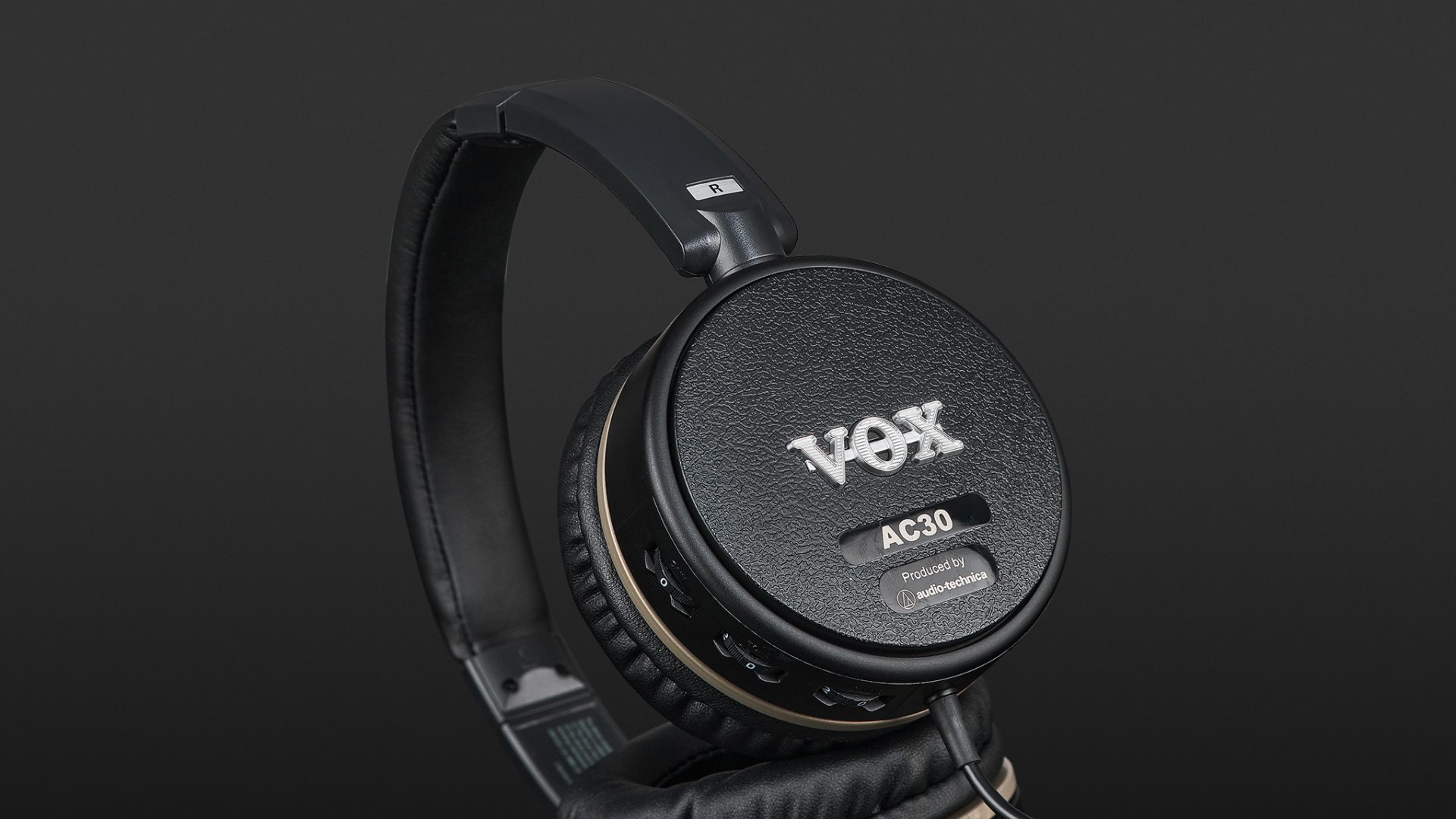

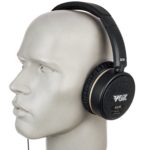
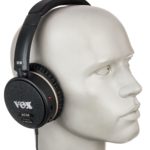

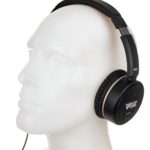
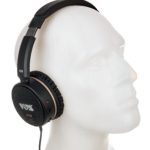





































Im a bass player & my concern w/the vox ac30 headphones for bass was (before I buy them) while hitting the lowest note on the B-string,(5 string bass) are the headphones going to bottom out / distort.
Many headphones claim to hit those low frequencies (20Hz), but when I have used them in the past w/a 5 string & an older ac30 that plugs directly into the bass & uses separate headphones, it always distorts the open B-string. I HAVE found that my Waza bluetooth bass headphones are the 1st to not do that. Your response would be great /thanks john